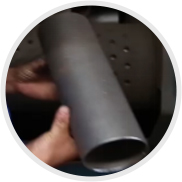 Afrikaans
Afrikaans  Albanian
Albanian  Amharic
Amharic  Arabic
Arabic  Armenian
Armenian  Azerbaijani
Azerbaijani  Basque
Basque  Belarusian
Belarusian  Bengali
Bengali  Bosnian
Bosnian  Bulgarian
Bulgarian  Catalan
Catalan  Cebuano
Cebuano  Corsican
Corsican  Croatian
Croatian  Czech
Czech  Danish
Danish  Dutch
Dutch  English
English  Esperanto
Esperanto  Estonian
Estonian  Finnish
Finnish  French
French  Frisian
Frisian  Galician
Galician  Georgian
Georgian  German
German  Greek
Greek  Gujarati
Gujarati  Haitian Creole
Haitian Creole  hausa
hausa  hawaiian
hawaiian  Hebrew
Hebrew  Hindi
Hindi  Miao
Miao  Hungarian
Hungarian  Icelandic
Icelandic  igbo
igbo  Indonesian
Indonesian  irish
irish  Italian
Italian  Japanese
Japanese  Javanese
Javanese  Kannada
Kannada  kazakh
kazakh  Khmer
Khmer  Rwandese
Rwandese  Korean
Korean  Kurdish
Kurdish  Kyrgyz
Kyrgyz  Lao
Lao  Latin
Latin  Latvian
Latvian  Lithuanian
Lithuanian  Luxembourgish
Luxembourgish  Macedonian
Macedonian  Malgashi
Malgashi  Malay
Malay  Malayalam
Malayalam  Maltese
Maltese  Maori
Maori  Marathi
Marathi  Mongolian
Mongolian  Myanmar
Myanmar  Nepali
Nepali  Norwegian
Norwegian  Norwegian
Norwegian  Occitan
Occitan  Pashto
Pashto  Persian
Persian  Polish
Polish  Portuguese
Portuguese  Punjabi
Punjabi  Romanian
Romanian  Russian
Russian  Samoan
Samoan  Scottish Gaelic
Scottish Gaelic  Serbian
Serbian  Sesotho
Sesotho  Shona
Shona  Sindhi
Sindhi  Sinhala
Sinhala  Slovak
Slovak  Slovenian
Slovenian  Somali
Somali  Spanish
Spanish  Sundanese
Sundanese  Swahili
Swahili  Swedish
Swedish  Tagalog
Tagalog  Tajik
Tajik  Tamil
Tamil  Tatar
Tatar  Telugu
Telugu  Thai
Thai  Turkish
Turkish  Turkmen
Turkmen  Ukrainian
Ukrainian  Urdu
Urdu  Uighur
Uighur  Uzbek
Uzbek  Vietnamese
Vietnamese  Welsh
Welsh  Bantu
Bantu  Yiddish
Yiddish  Yoruba
Yoruba  Zulu
Zulu conveyor return idler
The Importance of Conveyor Return Idlers in Material Handling Systems
Conveyor systems are a fundamental component in various industries, from manufacturing to mining, facilitating the efficient transport of materials. Among the critical components of these systems are conveyor return idlers. While they may appear to be simple devices, their role is vital in ensuring the smooth operation and longevity of conveyor belts. This article delves into the function, types, and significance of return idlers in conveyor systems.
Understanding Conveyor Return Idlers
Return idlers are roller components that support the underside of a conveyor belt as it returns to the loading point. They are positioned to carry the belt's weight, maintain its alignment, and prevent sagging. The return section of the conveyor belt is crucial because it travels back to pick up more materials. The efficiency of this return trip significantly impacts the overall performance and energy consumption of the conveyor system.
Types of Return Idlers
There are several configurations of return idlers, each designed to meet specific operational requirements
. The most common types include1. Flat Return Idlers These idlers have a simple design with a flat surface that supports the return belt. They are commonly used in lighter-duty applications.
2. Rubber-Lagged Return Idlers These come with a rubber coating to improve grip and reduce slippage, making them suitable for handling materials that might cause a smooth surface to be slippery, such as wet or fine powders.
3. Retractable Return Idlers Designed for easy maintenance, these idlers can be retracted from the belt path, allowing for quick access to the conveyor system without extensive downtime.
4. Crowned Return Idlers These idlers have a slightly raised center, which helps in centering the belt during its return journey, thereby minimizing edge wear and enhancing tracking.
conveyor return idler

The Significance of Return Idlers
The significance of return idlers cannot be overstated. Here are some crucial functions they serve
1. Support and Stability Return idlers provide essential support for the conveyor belt while allowing it to move smoothly back to the loading area. This support is vital for maintaining optimal belt tension, which is crucial for effective material transport.
2. Belt Alignment and Tracking Properly functioning return idlers help ensure that the conveyor belt runs straight. Misaligned belts can lead to excessive wear on both the belt and the idlers, increasing maintenance costs and downtime.
3. Reduction of Belt Wear By providing consistent support and tracking, return idlers minimize unnecessary bending and sagging of the conveyor belt. This reduction in wear translates to lower replacement costs and increased operational efficiency.
4. Noise and Vibration Reduction High-quality return idlers can decrease noise levels and vibrations produced by the movement of the conveyor belt. This not only ensures a more pleasant working environment but also reduces the potential for mechanical failures.
5. Maintenance Access Many modern return idlers are designed to allow easy access for maintenance, ensuring that operators can promptly address issues without significant operational interruptions.
Conclusion
Conveyor return idlers play a pivotal role in the functionality and efficiency of conveyor systems. By supporting the conveyor belt during its return phase, ensuring proper alignment, and reducing wear, they contribute significantly to the overall performance of material handling processes. As industries continue to innovate and evolve, the design and technology behind return idlers will also adapt to meet the increasing demands for efficiency and reliability. Understanding the importance of these components is crucial for anyone involved in the management or maintenance of conveyor systems, as it leads to improved operations and reduced costs in the long run.
-
Revolutionizing Conveyor Reliability with Advanced Rubber Lagging PulleysNewsJul.22,2025
-
Powering Precision and Durability with Expert Manufacturers of Conveyor ComponentsNewsJul.22,2025
-
Optimizing Conveyor Systems with Advanced Conveyor AccessoriesNewsJul.22,2025
-
Maximize Conveyor Efficiency with Quality Conveyor Idler PulleysNewsJul.22,2025
-
Future-Proof Your Conveyor System with High-Performance Polyurethane RollerNewsJul.22,2025
-
Driving Efficiency Forward with Quality Idlers and RollersNewsJul.22,2025





























